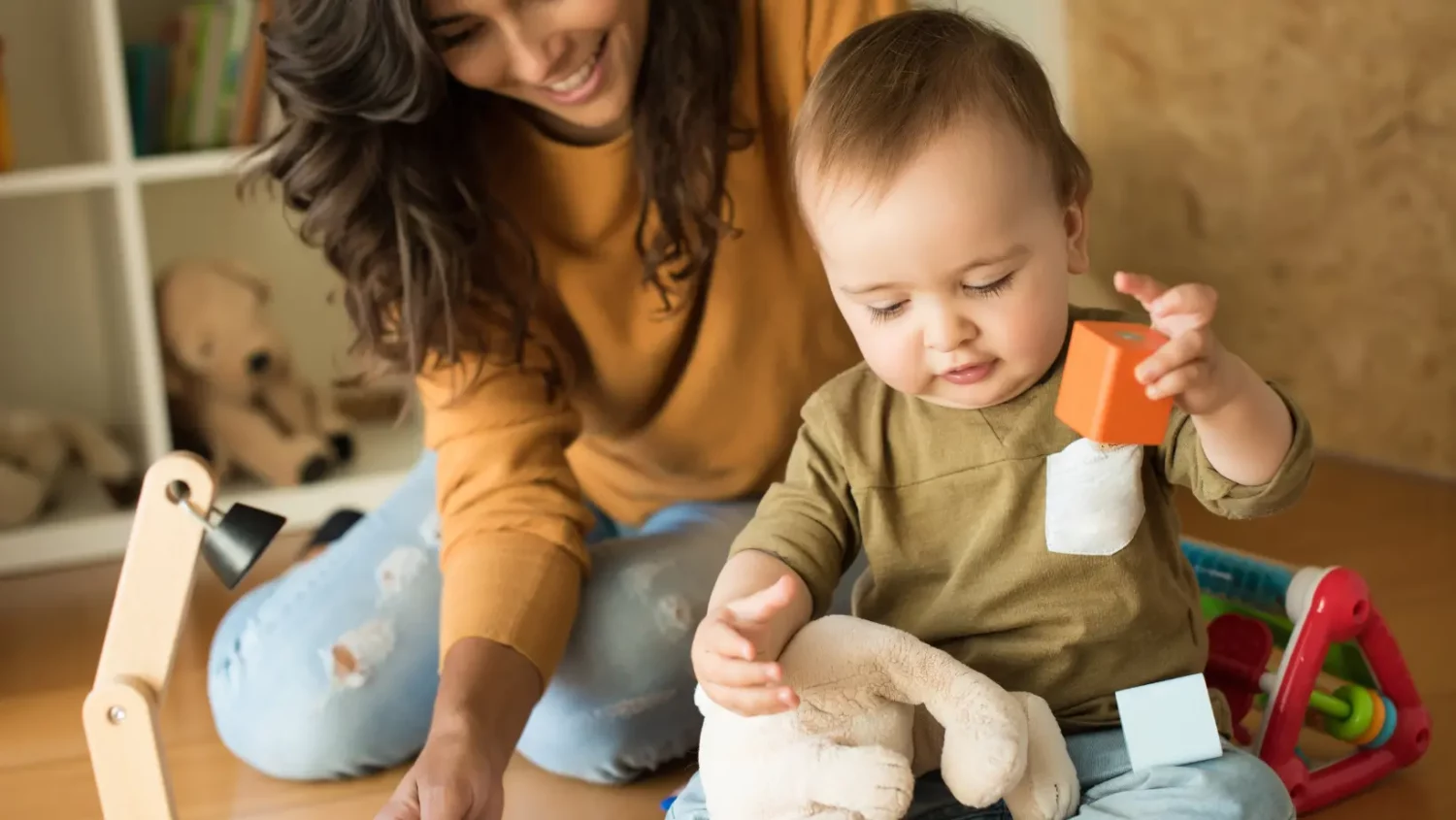Hi!
Life goes so fast. Your baby is growing and is developing so quickly! You might have the impression that you’re missing out on sooo many moments 😊! If this is happening to you, you’re not alone, especially if you’re on your third baby. During your very full daily lives, we have little time to stop, watch where our baby is in the development of their motor skills.
In this article:
- The development of babies from 7 to 9 months
- Activities for Babies From 7 to 9 Months
- The development of babies from 9 to 12 months
- Activities for Babies From 9 to 12 Months
Over the next few paragraphs, I would like to talk about the major learning stages of a 7-9-month-old baby, what generally they should be able to do, and the learning stages of those aged 10-12 months.
The activity sheets presented in this post were developed by physiotherapists of the Institut de réadaptation de Québec (IRDPQ).
The development of babies from 7 to 9 months
 Get ready parents. Your baby is now moving much more easily, rolling, pulling themselves, no longer “sitting.” If you have yet to have had to run after them, it will start now 😊! Often, they no longer need much stimulation as they find lots of new challenges in their environment on their own. They see it differently as they’re more skilled in maintaining different positions.
Get ready parents. Your baby is now moving much more easily, rolling, pulling themselves, no longer “sitting.” If you have yet to have had to run after them, it will start now 😊! Often, they no longer need much stimulation as they find lots of new challenges in their environment on their own. They see it differently as they’re more skilled in maintaining different positions.
Given that they can sit better, they will play more often in this position. Around eight months, they can transfer their weight easier. With their increased muscle strength, they can raise their head and torso. They will perfect their ability to pivot on their stomach, which starts around 6 or 7 months.
However, you have to beware that they may, at any time, fall over backwards if not supported. If your baby sits with their legs in a “W,” you should straighten out their legs. You want to avoid behaviours that don’t work the right muscles at this stage, which can lead to muscle weaknesses, shortening of specific muscle groups and the risk of future instability and pain in joints.
Crawling, rotating with their torso, crawling on all fours (around seven months) and swaying all become fun for them. They explore different positions while moving which will allow them to discover the vast diversity of their environment. However, ATTENTION, they have no idea what danger is!
If your baby seems more passive, lazier, has a hunched back, and only explores things in front of them, this is an indication you need to encourage them to do more by playing. If your baby is very, very active, you can also instill balance with periods of calm activity to manage their energy.
At the affective level, the specificity of children in this age group resides in the fact that they’re in “affective interaction.” They can break out laughing if this makes you smile and grabs your attention. However, paradoxically, from time to time they can be very aggressive, screaming loudly if they’re not happy.
The baby might cry if they hear another baby or friend cry, as they’re very empathetic 😊. This stage is when they will watch their parent’s reaction before reacting. For example, if they fall, they will look at their parent before starting to cry.
 At eight months, your baby may be scared of strangers and will always look for the presence of their parents to reassure them. Separation anxiety is healthy and a transition stage in a baby at this age. A baby has limited notions of time and memory. This is why they will strongly react when they notice their parent, especially their mother (who often spends more time with them), isn’t near them.
At eight months, your baby may be scared of strangers and will always look for the presence of their parents to reassure them. Separation anxiety is healthy and a transition stage in a baby at this age. A baby has limited notions of time and memory. This is why they will strongly react when they notice their parent, especially their mother (who often spends more time with them), isn’t near them.
Also, when putting them to bed, when their mother or father leave their room, they want to be reassured of your presence. This is part of healthy baby development. Putting them to bed with a comforting object will help, as they have something they feel secure about near them.
To learn about activities you can do with your baby, read the next part of this article, Activities for Babies From 7 to 9 Months.



